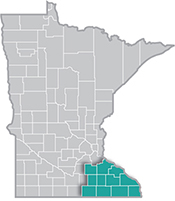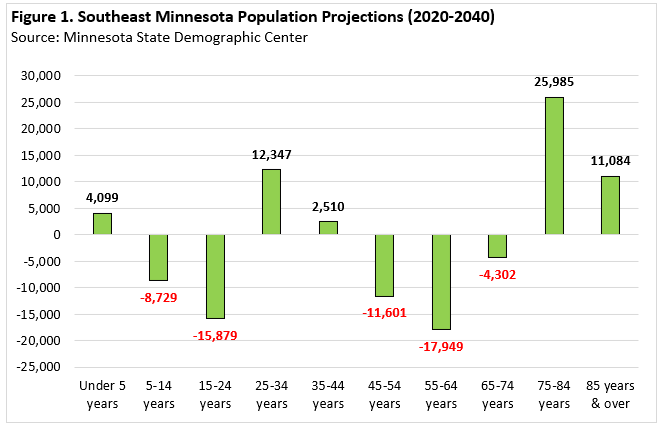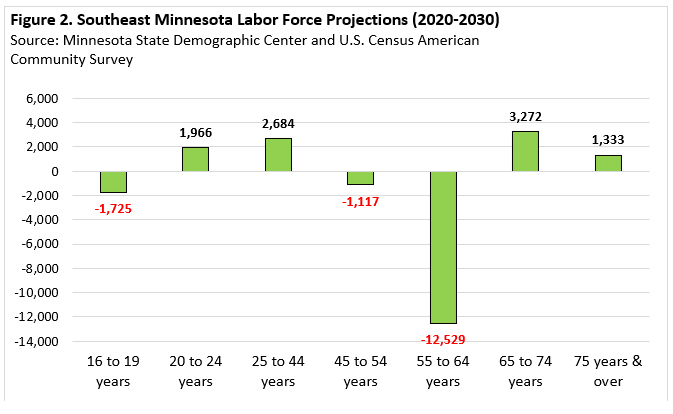 Southeast Minnesota is a health care and agricultural powerhouse. The region is home to the renowned Mayo Clinic and some of the world's most recognized food companies and brands.
Southeast Minnesota is a health care and agricultural powerhouse. The region is home to the renowned Mayo Clinic and some of the world's most recognized food companies and brands.
Advanced manufacturing is especially strong here, with machinery, chemicals, and electronics among the top products.
Want the freshest data delivered by email? Subscribe to our regional newsletters.
4/29/2021 9:00:00 AM
Southeast Minnesota has seen steady population growth over time, adding just over 50,000 new residents during the past 20 years. But shifts in Southeast’s population moving forward will be fueled by the aging baby boomers who are moving up into higher age categories. Population projection data from the Minnesota State Demographic Center shows that the population between the ages of 45 to 74 are slated to see a decrease of almost 34,000 people from 2020 to 2040, over half of which are expected to be among those between the ages of 55 and 64 (-17,949 people).
The region is projected to see losses in some of the younger age brackets as well, including a loss of over 8,700 among those between the ages of 5 and 14, and an additional loss of 15,879 among those between the ages of 15 and 24 years. In sum, the region is projected to see a small population decline over the next 20 years (see Figure 1).

However, there are projected to be very large increases among those in the highest age brackets, with an increase of more than 37,000 people aged 75 and over. And while the region’s population is expected to see additional increases in other age brackets, including a jump of 12,347 people aged 25 to 34, 4,099 additional people aged five and under, and 2,510 more individuals between the ages of 35 and 44, the total population in the region is anticipated to see a decrease of over 2,400 people, a loss of 0.5%.
This shift in population is also projected to have an impact on the region’s labor force. The labor force projections for the Southeast region show that the total labor force is projected to decrease by just over 6,100 from 2020 to 2030, a drop of -2.2%. More specifically, three age brackets are expected to see decreases, including a loss of 1,117 participants between the ages of 45 to 54, a drop of 1,725 of those between the ages of 16 and 19, and a massive loss of 12,529 labor force participants between the ages of 55 to 64 (see Figure 2).

In sum, the population is projected to see some dramatic changes in the upcoming decades, including large losses of individuals who are of working age and especially among older working age people. This trend is undoubtedly going to have an impact on the future workforce, especially those between the ages of 55 to 64. With this decline, many businesses will likely experience a loss of experienced workers and may continue to have trouble recruiting new workers as the projected labor force increases among those ages 20 to 44 are rather minimal.
Contact Mark Schultz.